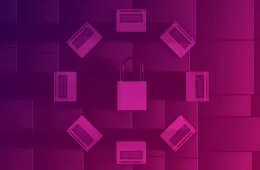
Why Being Aware of Threat Actors Matters
What is a threat actor?
A threat actor refers to any individual, group, or entity that poses a potential risk or threat to the security and integrity of computer systems, networks, or digital assets of a person, a company or an organization. These actors can vary widely in their motives, skills, and resources.
Threat actors engage in various malicious activities, such as conducting cyber attacks, exploiting vulnerabilities, or stealing sensitive information. The motivations behind these attacks can range from financial gain, political objectives, espionage, activism, personal vendettas, or simply seeking to cause chaos and disruption.

Threat Actors Targets
Threat actors’ targets depend on their motives and objectives. Understanding the potential targets of threat actors helps individuals, organizations, and governments implement appropriate security measures to protect their critical digital assets and infrastructure.
Here are some common targets of threat actors:
- Individuals: Threat actors often target individuals to steal personal information, financial details, login credentials, or to conduct identity theft.
- Businesses and Organizations: Threat actors regularly target businesses and organizations of all sizes. They usually seek to steal sensitive information, intellectual property, financial records, or customer information. Moreover, they may attempt to conduct ransomware attacks, disrupt business operations, or engage in industrial espionage.
- Government Institutions: State-sponsored threat actors target government institutions for political, economic, or intelligence purposes. Their objectives may include stealing classified information, disrupting critical infrastructure, influencing elections, or conducting cyber-espionage.
- Critical Research and Development: Threat actors may target organizations involved in cutting-edge research and development, particularly in fields such as technology, defense, pharmaceuticals, or aerospace. Their objectives may include stealing valuable research data, intellectual property, or gaining a competitive advantage.
- Public Infrastructure: Threat actors may also target public infrastructure, such as transportation systems, power grids, water treatment plants, or communication networks. Their attacks can disrupt services, cause infrastructure failures, or compromise public safety.
Importance of being aware of threat actors
Being aware of threat actors and understanding their motives and methods is crucial for maintaining data security. In fact, as cybercriminals constantly evolve their tactics, businesses must stay aware of the potential threat actors and keep up with the evolving landscape. Being aware of the latest trends in threat actor activities does not only allow you to anticipate potential threats but also take preventive measures to safeguard your digital assets.
Furthermore, understanding threat actors’ motives helps organizations identify vulnerabilities within their systems and networks. This awareness enables them to proactively patch security flaws, monitor for signs of intrusion, and employ appropriate security controls to mitigate potential risks.
Staying Ahead of Threat Actors
Staying ahead of threat actors requires a proactive and multi-layered approach to cybersecurity.
Here are some of the best practices to help you stay one step ahead:
- Educating your employees and spreading awareness on cybersecurity to reduce human error.
- Using multifactor identification and changing passwords frequently to keep data safe.
- Monitoring your employees’ activity to identify potential insider threats.
- Implementing robust cybersecurity measures to block malicious actors.
- Developing a comprehensive incident response plan.
- Conducting regular security audits and penetration tests to identify vulnerabilities.
By implementing proper strategies and maintaining a proactive cybersecurity protocol, organizations can enhance their resilience against threat actors and reduce the likelihood of successful cyber attacks. Remember, cybersecurity is an ongoing process that requires continuous monitoring, adaptation, and improvement to stay ahead in the ever-evolving threat landscape.








